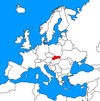
Gesamtdarstellung / Country Report
„Gesellschafts- und steuerrechtliche Rahmenbedingungen des Dritten Sektors in der Slowakei“
Kommentierte Texte & Links /Annotated Literature & Links
„The Evolution of the Third Sector in Slovakia“, Katarina Svitkova, 2004.
Der Text aus dem Jahr 2004 liefert einen grundsätzlichen Überblick über die Situation des Dritten Sektor in der Slowakei. Die Autorin stellt zunächst die verschiedenen Rechtsformen, welche NGOs zur Ausübung ihrer Tätigkeit wählen können vor. Der Text beschreibt außerdem die historische Entwicklung des Sektors und vergleicht die Situation von und nach 1989. Darüber hinaus werden die politischen Diskussionen zur Relevanz eines nichtstaatlichen Nonprofit-Sektors aus den 1990er Jahren erläutert. Auch über die gesetzliche Verankerung des Sektors und die strukturellen Gegebenheiten bezüglich Finanzierung, prozentuale Verteilung der Organisationen und deren Arbeitsmarktrelevanz klärt der Text konkret auf. Dennoch kritisiert die Autorin die unzureichende Datenerfassung und wissenschaftliche Bearbeitung des Themas.
This text from 2004 provides a basic overview about the situation of the Third Sector in Slovakia. The author introduces the various legal forms which NGOs may choose to exercise their activities. Furthermore the text describes the historical development of the sector and compares the situation before and after 1989. Moreover, the political discussions on the relevance of a non-governmental non-profit sector during the1990s are explained. The text also explains the legal foundation of the sector and the structural realities regarding funding, the percentage distribution of the labor organizations and their relevance to the employment market. Nevertheless, the author criticizes the lack of scientific data collection and processing of the issue.
„EFC COUNTRY PROFILE: SLOVAKIA“, European Foundation Centre, 2011.
Das Länderprofil des EFC behandelt Fragen über die rechtlichen Rahmenbedingungen für Stiftungen, wie etwa die Zwecke, welche durch Stiftungen verfolgt werden dürfen oder gesetzliche Regeln zur Errichtung und Verwaltung einer Stiftung. Darüber hinaus wird die steuerliche Behandlung von Stiftungen erläutert. In diesem Zusammenhang werden Unterschiede bei der steuerlichen Behandlung der Einnahmen aus den verschiedenen Sphären der Mittelakquirierung dargestellt. Schließlich wird die länderspezifische Situation des Spendenrechtes aufgezeigt.
The profiles address issues concerning the legal environment of foundations, such as the purposes that foundations are allowed to pursue, the requirements for setting them up, governance and transparency requirements. The tax treatment of foundations is also discussed, with details on the income tax treatment of the foundation, including income from economic activities and asset management. There is also information on tax incentives for individual and corporate donors, including the issue of cross-border donations.
„USIG Country Information“, ICNL, 2011.
Das USIG Länderprofil liefert einen Überblick über die steuerliche Behandlung von NGOs im jeweils betrachteten Land. Insbesondere steht die steuerliche Behandlung von Spenden im Fokus. Grundsätzlich soll dadurch US-Amerikanischen Spendern erleichtert werden, die zur Abzugsfähigkeit einer Spende an eine im Ausland ansässige Organisation notwendigen Äquivalenz-Bestimmungen feststellen zu können. Die Berichte sind von Lokalen Experten verfasst.
This compilation of country codes and laws is intended to assist grantmakers and their advisors when undertaking equivalency determinations for foreign grantees under IRS Revenue Procedure 92-94. Specifically, this section describes the legal framework of nonprofit organizations (also known as non-governmental organizations or NGO’s) in select countries, along with translations of legislative provisions relevant to an equivalency determination under IRS Revenue Procedure 92-94.
Rechtliche Grundlagen / Legal Sources
![]()
Ausgewählte Landesdaten / Selected Country Data
OECD.
Die OECD bietet unter dem folgenden Link einen Querschnitt aus über 40 verschiedenen Datenbanken an. Die länderspezifischen Daten werden jährlich aktualisiert, außerdem sind Links zu den original Quellen vorhanden.
This statistical profile, updated yearly, is a snapshot of data selected from more than 40 statistical databases available on SourceOECD, our online library. The red ’s in the second column provide links to the sources of the data, where more up-to-date data and longer time series can be found.
IWF, Dissemination standards Bulletin Board / Index of Data Categories.
Unter dem folgenden Link bietet der IWF einen nach Kategorien geordneten Index, welcher aufschlussreiche Daten verschiedener Bereiche zur Struktur des jeweiligen Landes bietet.
With the Bulletin Board the IMF provides an index of categories, delivering data about different fields concerning the structure of a certain country.
CIA, World Factbook, 2010.
Das World Factbook beinhaltet Informationen über die Geschichte, Regierung, Ökonomie, Geographie, Infrastruktur und Internationale Beziehungen von insgesamt 266 Einheiten. Dadurch liefert dieses Länderprofil einen eher allgemeinen Überblick über das jeweilige Land.
The World Factbook provides information on the history, people, government, economy, geography, communications, transportation, military, and transnational issues for 266 world entities. Thus it delivers a rather general overview about the selected country.
